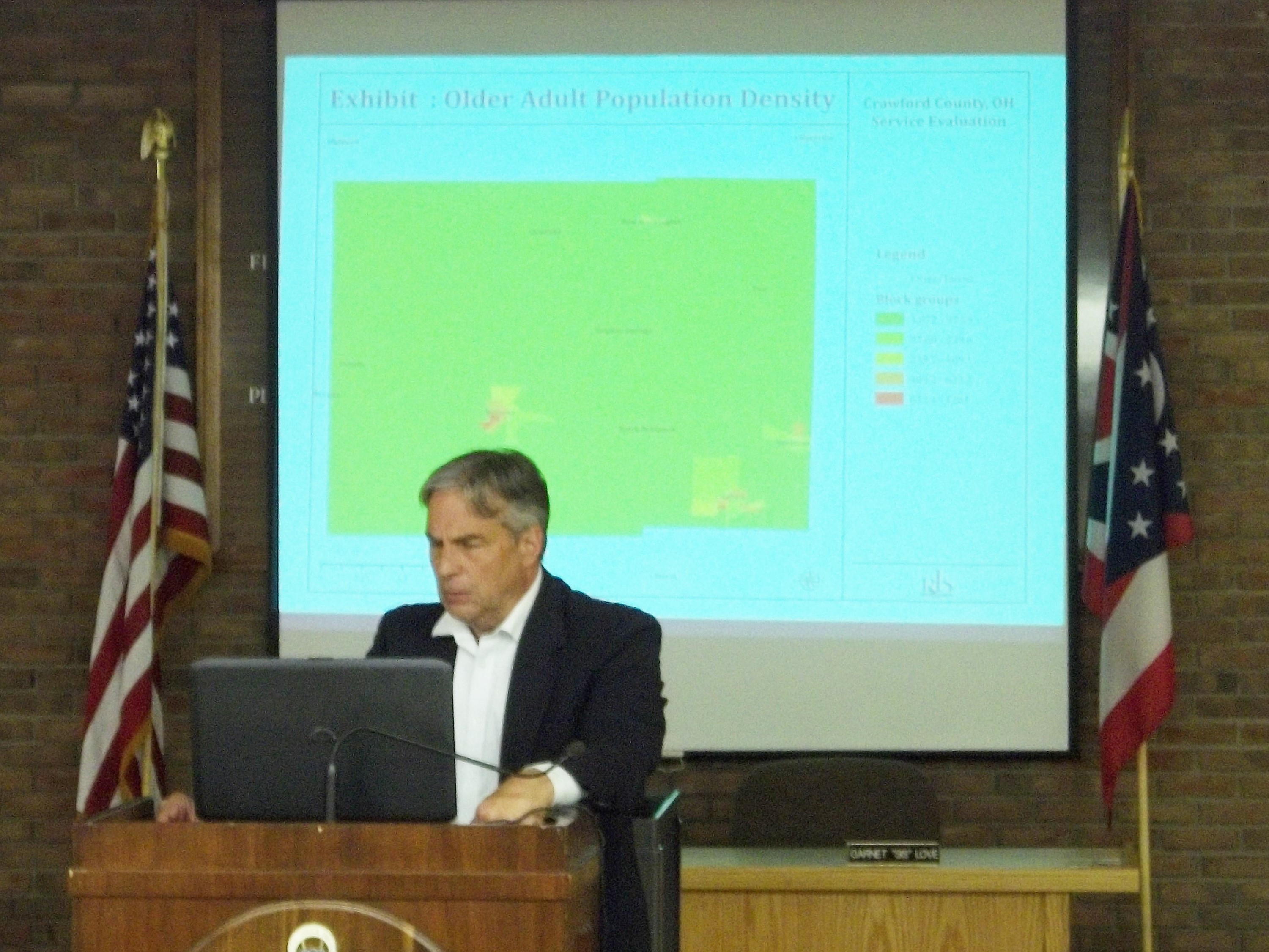By Kerry Rahm
krahm@wbcowqel.com
The Crawford County Rural Public Transportation Service Evaluation and Planning Study revealed the results of a local survey at Bucyrus City Hall Monday night.
The survey was ordered to uncover unmet transportation needs and what the county can do to improve upon its public transportation – to make it more efficient and convenient for its users or to highlight concerns which may have been missed.
RLS Associates, Inc., a transportation based consulting firm out of Dayton, was commissioned by the Ohio Department of Transportation (ODOT) Planning Study and the Crawford County commissioners to survey Crawford County residents on transportation issues.
Steve Fittante and Claire Oswald of RLS presented the findings.
RLS evaluated the existing public transportation program in terms of geography, current service and availability, and even some lifestyle demographics common to Crawford, which for these purposes, is considered a strictly rural, non-urbanized county.
“Meeting the needs of the population,” is the goal, said Fittante, and “what the options might be to enhance (the current) service.”
The night’s agenda included an overview of the study and the survey performed by the company, and explanations of some of the various federal transit administration grant programs. These subsidy sources are used to write down the cost of transportation.
“In case some of you may not know, fares do not cover the whole cost of transportation,” stated Fittante.
ODOT and Crawford County commissioners believe now is the time for analysis, as both entities cited a “high number of trip denials and limitations on the hours and frequency of service,” as cause for action.
The overview stated that ODOT, which uses federal funding, assumes 80 percent of project costs, and Crawford assumes 20 percent. There are currently 35 rural transit systems across the state, and Fittante points out that “common perceptions are that the system is only for senior citizens and disabled persons.”
RELATED CONTENT: County’s public transportation provider could be changing | Commissioners meet with ODOT to discuss public transportation | County residents encouraged to take public transit survey
Claire Oswald of RLS explained that there were three different surveys used in the study – a “Rider Survey,” a “Community Survey,” and an “Employer Survey.”
Two hundred and eighty-two people filled out the “Rider” survey, with riders defined as persons already using public transportation. There were 200 respondents for the “Community” portion, which was for anyone in general, and nine area employers participated as well.
Oswald noted that this was considered a good turnout for the survey. For some questions, respondents could choose multiple answers, and a margin of error was not given.
For the Rider Survey, it was revealed that 58 percent of respondents use a walker or a cane, and 31 percent use manual or electric wheelchairs. These were the two most common answers.
Eighty-four percent only ride occasionally or almost never, with only seven percent riding every day.
Public transportation serviced as “important or very important” by 62 percent of people, and the most common time to ride was from 8 a.m. to 3 p.m.
The two most common reasons that people need public transportation were non-emergency medical treatment, i.e., doctor’s appointments and employment.
To 71 percent, same-day service is very important to the respondents, in part because currently the service is an advanced reservation service where a rider needs to make a request ahead of time.
Fifty percent need out-of-county service, most often to the cities of Mansfield and Marion.
The highest rated aspect of the survey was handicap accessibility, while the lowest rated was hours of operation, meaning riders wanted more choice of when they can ride.
The Community Survey was open to anyone in the county. Most people get around the county by personal vehicle (77 percent), riding with family or friends (44 percent), or biking or walking to get where they need to go (30 percent).
The survey showed that “Wal-Mart was overwhelmingly the most common specific destination… at 85 percent,” said Oswald.
Bucyrus, Mansfield, Galion, and Ontario, in that order, were the most popular areas to travel.
Transportation on Sundays, from 8 a.m. to noon was the most popular time in general. Oswald theorized this might be because “people were trying to get to church.”
Fifty-two percent said they would use public transportation if there were no other options, 33 percent would use it if it could save them money and 10 percent said they would never use it under any circumstance.
The most striking statistic that the Employer Survey uncovered was that 29 percent of employers were willing to offer to pay for their employee’s transportation fares if current fares were in the $1 to $3 range. Oswald mentioned that it is expensive to lose employees because of their lack of transportation, resulting in high turnover rates and squandered training time.
A June 21 meeting will be held from 6 to 8 p.m. at the Galion Public Library and a June 22 meeting will be held at the Village of Crestline Administration Building from 6 to 8 p.m.


